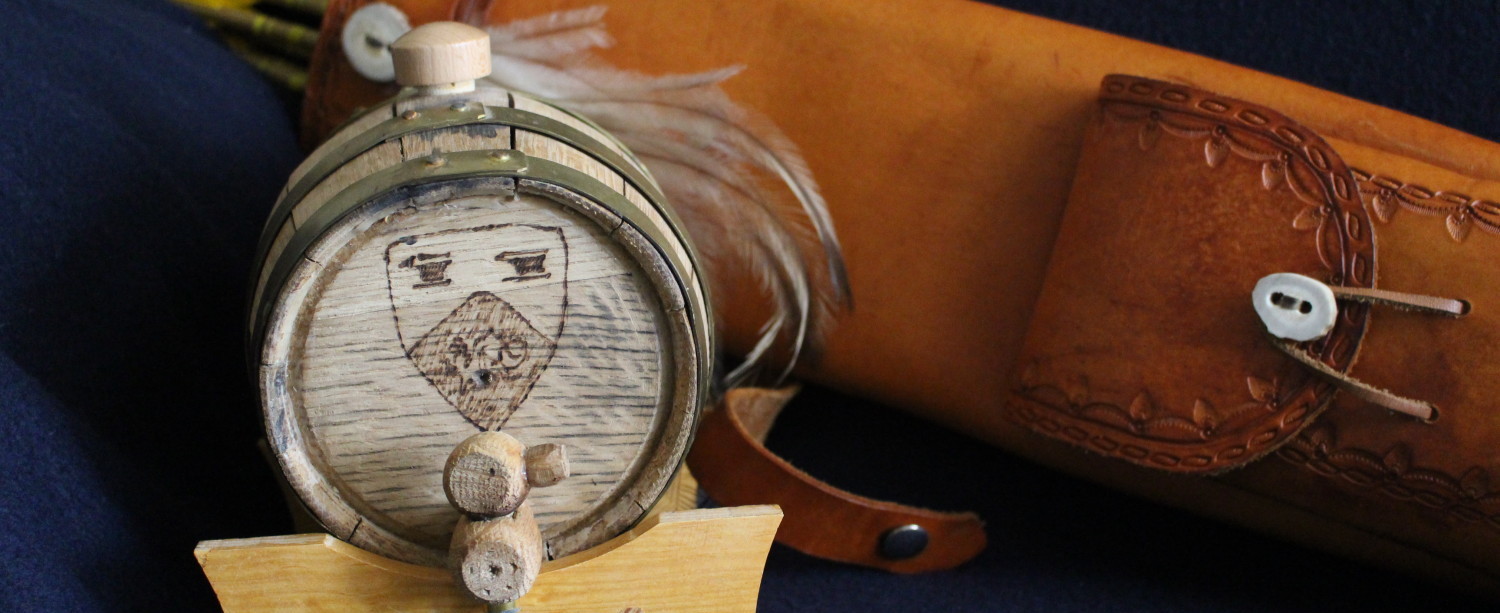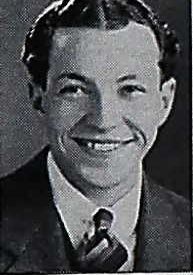Mid-Watch in Verse: USS Maryland
This is the first in a series of posts about a curious tradition in the US Navy. Anyone who has ever seen a Deck Log from a US Navy vessel knows that it is typically a place for exacting administrative detail regarding the status of the ship, its location, speed, etc. However, for a four hour period at the beginning of each year, the Officer of the Deck (OOD) is allowed to be creative by writing the Mid-Watch report (0000 – 0400) in verse. For a more thorough history of the practice check out this article from the Naval History and Heritage Command.
My interests in WWII Naval operations and my access to deck logs at the Fold3 website led me to begin this series. Unfortunately, I had access to only those deck logs from 1943, but I was still able to find about two dozen deck logs written in verse during this critical time during the war. In this series, my intent is to provide the original verse from the log and to add as much information I can find about the author of the poem.
This first installment comes from the deck log of the USS Maryland (BB-46). Maryland was a battleship of the Colorado-class, commissioned in 1921 and decommissioned in 1947. She earned seven battle stars during her time in WWII.
On January 1, 1943, the USS Maryland’s Mid-Watch deck log entry was as follows:
00-04. Oh, it is the mid-watch on New Year’s Day,
And the Mary Maru’s rigged in battle array.
The US’s at war with the Germans, Italians, and Japanese,
Roumanian, Hungarian, Albanian, and Siamese.
The Mary Maru’s moored in berth twenty-nine,
With eight fathoms of chain instead of a line-
Anchor chain to the starboard out through the hawse–
Attached to a buoy. (Now, I must pause).
In fifteen fathoms of water she sits very dandy,
In the British Harbor of Tombako Nandi-
Which appears on the chart as Levu Viti
(This is transposed – It’s an island of Fiji).
Number two kettle’s cut in on the line,
For auxiliary purposes this is so fine.
Let’s see now, number two goes with the forward space
(Which is just how we have it in the present case).
The ship is all darkened, the yoke we have set,
Modified slightly because of the net,
Which encircles the ship, torpedoes to turn
Away from both sides, from our stem to our stern.
At present, the net is open to starboard,
And has swung to the current around to the larboard.
Guns we have manned in Condition “Tres”,
To let bullets fly at the Jap’s evil face.
Here there is gathered the Pacific Fleet,
Minus some ships that will our foe defeat.
Oops! The district craft I almost forgot,
Which gives us a headache, every one of the lot!
In the New Mex is the SOPA,
He’s ComBatPac for the USA.
That’s all for the present I have to relate,
Any more details will just have to wait.
J. A. Shefrin
Lieutenant
[Here is a link to the actual deck log entry.]
Jack Allen Shefrin was born in the Kansas City, MO area on December 30, 1915. He attended Central High in Kansas City and based on his 1932 yearbook entry he intended to pursue a career in writing. He attended the University of Missouri, Columbia, earning bachelors and masters degrees. A college yearbook shows Jack as a member of the Poetry Society, so his interest in verse preceded his time in the Navy. Records indicate that he enlisted in the Navy on July 3, 1940. On July 15 at Guantanamo Bay, Cuba, he boarded the USS Wyoming (BB-32) as an Apprentice Seaman as he embarked on his training to be an officer. At that time, the Wyoming provided a platform for training. By August 10, 1940, Jack was transferred to the USS Illinois (BB-7), an old battleship that served as a training vessel for the Naval Reserve Midshipman School in New York. At some point in 1941, he earned his commission as an Ensign in the Naval Reserve and began his service on the USS Maryland. By the time Jack wrote the January 1, 1943 deck log entry above, he had risen to the rank of Lieutenant. On August 17, 1943, he left the Maryland and headed to the U.S. for other duty. A 1952 article in the Kansas City Times indicates that he served as an Air Combat Intelligence Officer through the rest of the war. By 1944, Jack had risen to the rank of Lieutenant Commander, which he held until he retired from the Naval Reserve in October of 1955.
Over his lifetime, Jack held many positions in broadcasting across the country (CA, TX, and NY, to name a few). He eventually moved back to KC where he taught history and English at the University of Kansas City for a few years and worked for the IRS until retirement. He was a fixture on the stage in college and community theater in KC. After his service to the Naval Reserve, he continued to serve his community in many capacities. He was active in the Kansas City Jewish community. He died on January 10, 1991 and is buried in the Sheffield Cemetery in Kansas City. A short obituary and photo of his gravestone appears on the Find-a-Grave website.


Dave, I think you’re on to something here. There is a book in all this, especially if you could gain access to deck logs from other times during the war. Could make a really interesting and unique perspective on WWII. And if you needed help editing, I’d be glad to do that.
I’d love to do something like that! Alas, it would require some time spent at the National Archives in DC. I’m not sure I’m up to that! 😀
New development: I found that a number of deck logs for ships active in WWII are now available at the National Archives. I was unaware of this. After just a few minutes, I already found one poem from a WWII destroyer from January 1, 1945.
Dear Dave…I surmise you are the intrepid investigator doing this research. I happened to be watching a WWII documentary the other day and thought of MY GREAT UNCLE JACK. So…I Googled him and up came this link to check out. I was immediately fascinated. I thought, for sure, I know someone who would thoroughly enjoy seeing this.
As it happens, I am now sitting here with my mother, the last remaining niece of Jack Allen Shefrin. She is 88 and still kicking. Mom’s brother, Gary, lives in Philadelphia. I had no idea of this curious, but fantastic, tradition. We excitedly enjoyed seeing his thorough description of the mid-watch that night.
The history of his time in the Navy is more detail than we could ever get out of him. Like many others, he certainly did not like talking to us about the war. So this incredible, direct connection for us, imagining him sitting and penning these words, was a small joy and opportunity for us to think of him again.
Uncle Jack was a tremendous person, to everyone. He laughed all the time and had an incredible vitality for life. His camera was always with him. His acting was a great outlet for his always gregarious nature.
We miss him.
Randy,
Thank you so much for your response. I am, in fact, the person who compiled the information about your great uncle. His was the first of my series Mid-Watch in Verse and I continue to research and write the series. I chose your relative for my first entry because I thought his poem was very good and because he seemed like an interesting person who I would probably enjoy being around. I also spend a fair amount of time in the Kansas City area, so am familiar with his locale later in life.
One of the things that has been very rewarding about this project is the contact I’ve had with the verse writers’ families. I’ve gotten some amazing accounts of both personal and navy experiences.
Thanks again for your response! I’m glad you found the item!
Regards,
Dave
LOL, guess I should have mentioned Mom’s name (Dorothy). I hear many stories, of course, but rarely about the war.
As well, Mom’s older brother Jack, enlisted in the Navy right near the end of the war. And then he came home.
Dave
My name is Rolf Sabye. I’m a former crew member of the USS Hornet CVS12, serving from March 68 to the decommissioning in June 1970. This period was during the Vietnam war where we patolled for 9 months as well as recovering Apollo 11 and 12 the following year.
I’m currently on the boards of both the USS Hornet Museum, and the USS Hornet Veterans Association. As such I’m often asked for information on former Hornet crew members. My research often takes me to EBAY where I find interesting items relating to Hornet. Some time back I purchased a few old letters complete with envelopes sent from the USS Hornet in 1944. The letters were sent from Lt. Jack Shefrin. Now your aricle above does not mention the USS Hornet, but does mention the USS Maryland, and that was the link I spotted. In the first letter from Lt Shefrin, he states (in reference to the new Hornet, commissioned in 43), “This is a grand ship, and life has been rather exciting. But I still look back fondly upon those days of carefree recreation we had on the big “Mary”. (The USS Mayland BB46 was commonly referred to as the “Big Mary” by her crew) “This ship is completely different from any duties I’ve ever had” and the letter goeas on with a few war details.
When I found your article above, I thought this information would be an interesting addendum on Jack Shefrin.
I was also hopig to find any family, and would pass this letter on to them. But no luck so far.
Best regards
Rolf Sabye
sabyegrp2@gmail.com
Dear Mr. Sabye,
Dave Johnson reached out to me about your post and the remarkable fact that you are in possession of letters posted from the Hornet from my Great Uncle Jack Shefrin. He was my mother’s, mother’s brother. He was thoroughly involved in our family life for decades upon his return to Kansas City. I am very excited. I will certainly leave you my contact information and would LOVE to have them if you are so inclined, as you say. Upon our contact, I will absolutely share my address with you.
With great respect and appreciation,
Randall M. Katcher
I am honored to have been a conduit by which Mr Shefrin’s correspondence from 1944 can be reunited with his family members. I’m thrilled that my short blog post, in a sense, reached back 80 years ago.
Dave